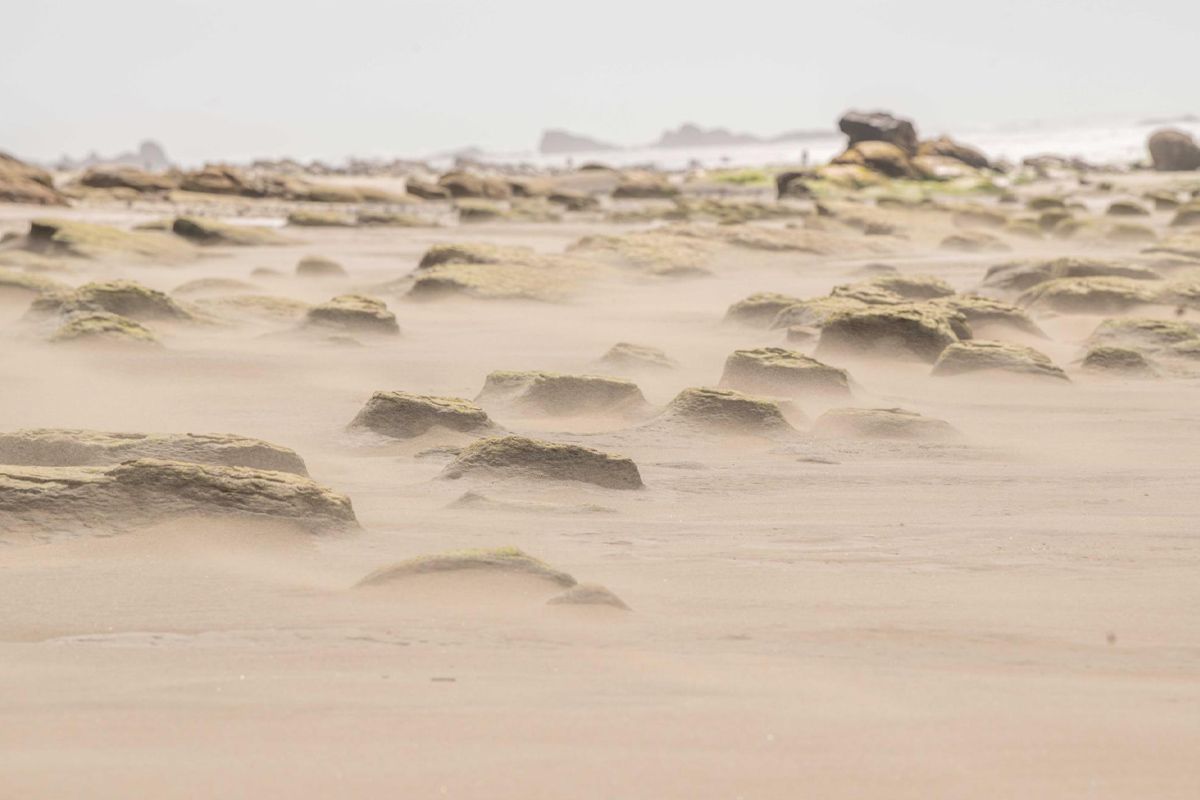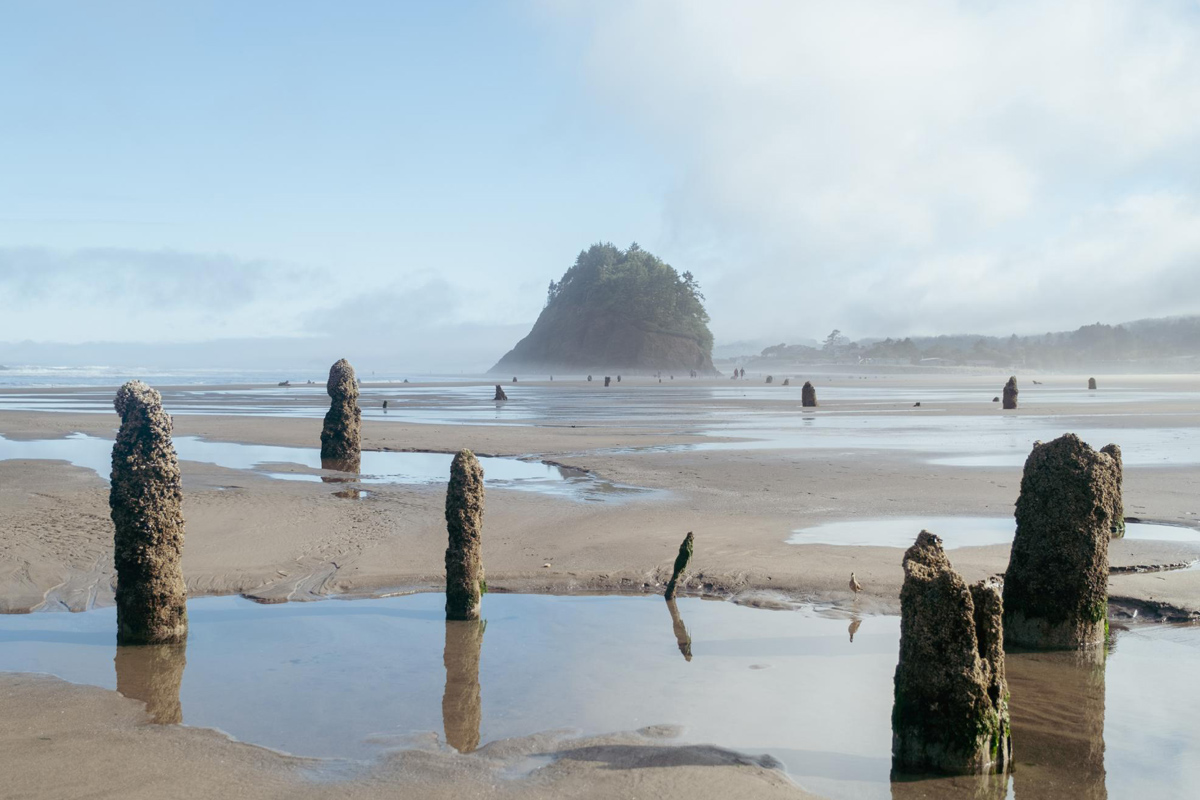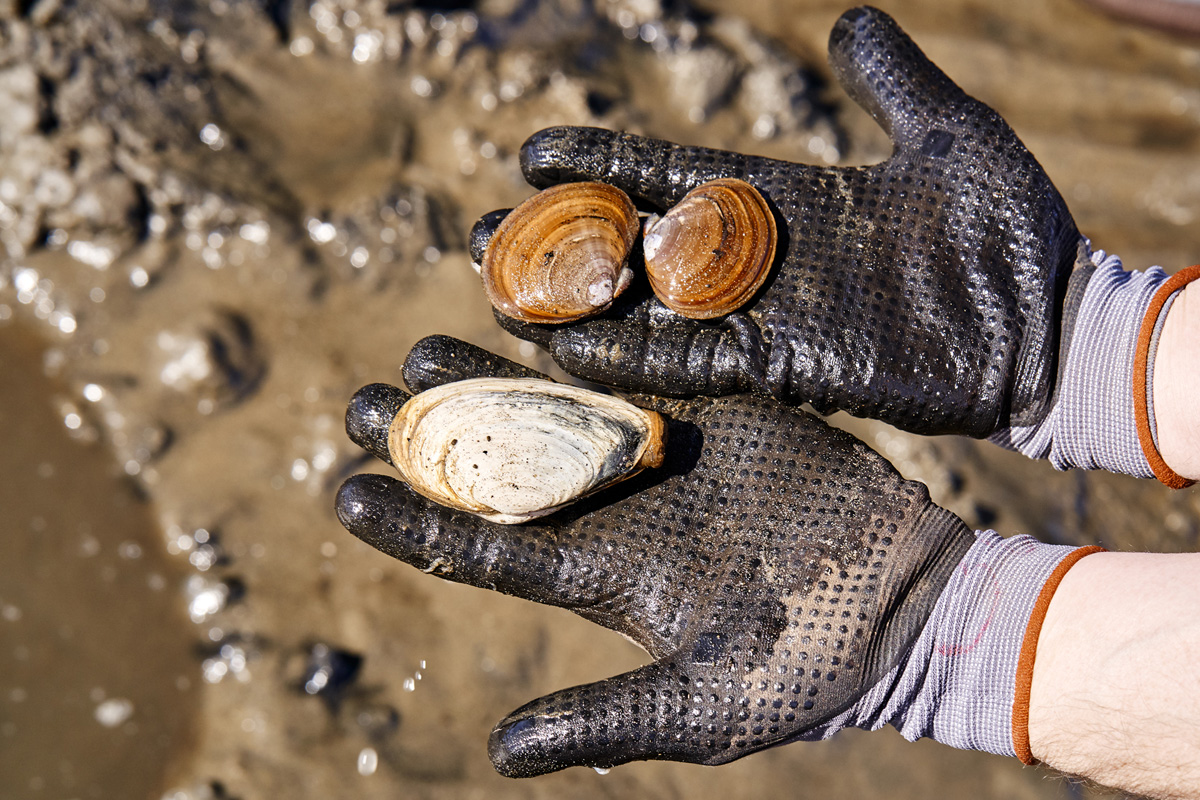Here’s what you need to know about the nitty-gritty of Oregon’s beaches.
Next to majestic sea stacks and awe-inspiring surf, sand might not be the most obvious marvel of the Oregon Coast. Without those humble little granules, though, there would be no sandcastles, no writing your name on the beach and no sinking your toes into warm softness on a dune hike. Here’s a crash course on how sand comes and goes, who lives in this special habitat, and how we can help protect it.

Where Oregon’s Sand Comes From
Most sands on Oregon beaches are made primarily of tiny rock particles. Sands on beaches north of Cape Blanco, Oregon’s westernmost point, tend to be finer grained, while those south of Cape Blanco are coarser and more angular. It all has to do with where the sand originally came from.
Sand is formed over millions of years as rock slowly erodes. As the Pacific Ocean pounds away at Oregon’s rocky headlands, they gradually break apart into smaller and smaller pieces, forming sand. Beach sand is also formed inland, where wind, rain and water also erode rock. Rivers eventually sweep that sand out to the sea, where waves and currents form it into drifts, bars, dunes and slopes.
The sands on the Northern Oregon Coast are mostly finely ground sedimentary rocks from the Coast Range, which runs north-south from the Columbia River to the Coquille River. Sedimentary rocks are made when tiny particles accumulate and fuse together, so they’re prone to crumbling finely and evenly. Larger-grained Southern Oregon Coast sands are made from the metamorphic rock of the Klamath Mountains, made of more jagged crystals that were formed under volcanic heat and/or pressure.
Want to feel the difference for yourself? Short Sand Beach at Oswald West State Park just north of Manzanita, Cape Kiwanda State Natural Area just north of Pacific City and Bastendorff Beach just to the west of Charleston are all great places to feel that super-soft northern sand. Tseriadun State Recreation Site in Port Orford and any of the beaches accessible from the Samuel H. Boardman State Scenic Corridor north of Brookings are good spots to experience coarser Klamath sands. Another great way to dig even deeper: Book a dunes-exploration walk with Wavecrest Discoveries in Coos Bay.

How Sand Moves Through the Seasons
Like plants and trees, sand on the Oregon Coast has a season. In winter powerful storms and winds from the south pull sand off the beach and out into the ocean. Then summer’s comparatively calmer seas and winds from the north push that sand back onto the beach. Offshore currents also push sand up and down the coast seasonally, resulting in an ever-shifting sandscape — including Oregon’s otherworldly Oregon Dunes National Recreation Area between Florence and Coos Bay, which is one of the largest expanses of temperate coastal sand dunes in the world.
You can see the impact of seasonal sand migration at the Peter Iredale shipwreck in Fort Stevens State Park just outside of Astoria. It’s generally more visible in the winter, when currents sweep the sand away from the beach. Or check out the Neskowin Ghost Forest in Neskowin, about 15 miles north of Lincoln City, which is revealed more clearly in winter and partly disappears beneath the sand in the summer.

What Lives in the Sand
Sand might look lifeless, but it’s actually a thriving habitat packed with organisms small and large. If you look closely, you might see tiny crustaceans called sand fleas (don’t worry, they don’t actually bite) hopping about on piles of seaweed or driftwood. Dig down a few inches and you might come across sand shrimp or other critters that make their home beneath the surface of the sand. Some can only thrive in very specific areas and conditions, so it’s important to take care when experiencing the beach by foot, on cycle or in a motorized vehicle.
Digging your own clams can be a great way to get up close and personal with all the different sand creatures. Clamming is easy and requires minimal gear — an Oregon shellfish license, a shovel and a bucket are all you need to get started. Just remember to stick to clamming limits, and call the shellfish hotline for any unexpected closures before you start.
Many creatures treat the sand as a seasonal home, so be sure to visit responsibly. The western snowy plover nests on Oregon beaches every summer, and some beaches have seasonal closures to make sure these endangered shorebirds can raise their chicks in peace. If you’re lucky enough to come across any harbor seals or Steller sea lions on the beach, give them a wide berth and enjoy watching them from afar. Just like you, they’ve come to Oregon beaches to enjoy a quiet spell on the many miles of wide-open sand.
– By Margarett Waterbury
Top photo by Jeremy Burke